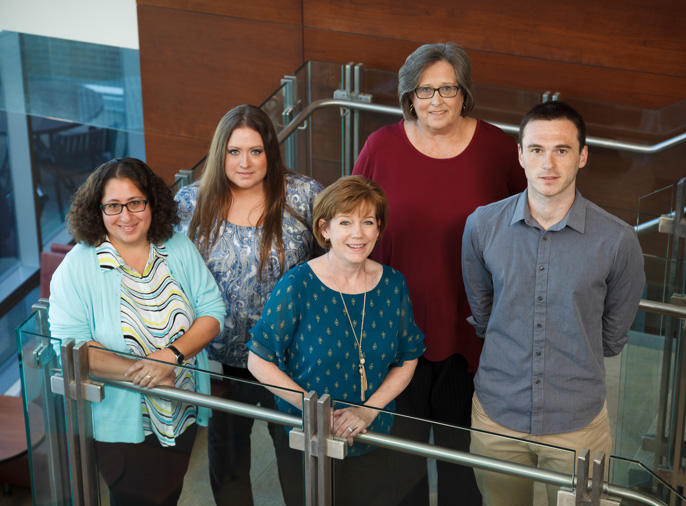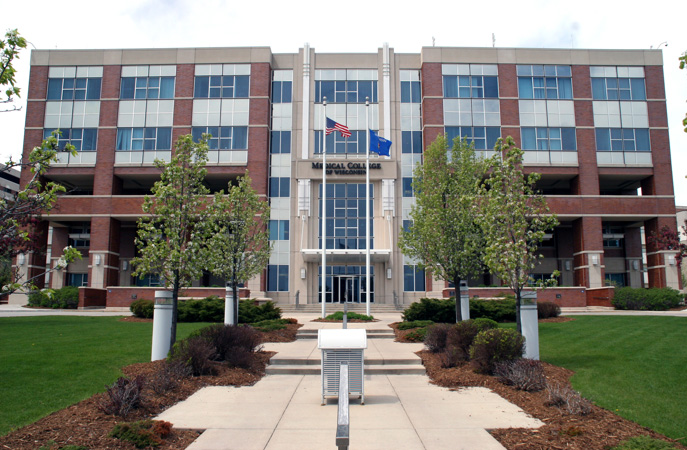Search QIN

Medical College of Wisconsin
Quantitative Perfusion and Diffusion MRI Biomarkers to Measure Glioma Response
Kathleen M. Schmainda, PhD
kathleen@mcw.edu
Grant Number: U01CA176110
The overall goal of this U01 project (CA176110) is to develop and validate both standard and novel perfusion-weighted MRI (PWI) and diffusion-weighted MRI (DWI) biomarkers for evaluation of brain tumors and their response to therapies. Two PWI methods will be characterized for clinical trials. The first more wide-spread DSC (dynamic susceptibility contrast) approach provides tumor rCBV (relative cerebral blood volume) measurements obtained after a pre-load of contrast agent and corrected for confounding contrast agent leakage effects. The second approach, while less-proven has high-potential to become the most comprehensive perfusion solution. It consists of using a spiral perfusion imaging method with consecutive echoes (SPICE), which enables the simultaneous collection of both DSC (dynamic susceptibility contrast) and DCE (dynamic contrast enhanced) perfusion data using only a single dose of contrast agent and incorporates comprehensive correction for leakage effects. In addition, the team will continue to explore the potential of DWI methods for the evaluation of treatment response, specifically by computing changes in the apparent diffusion coefficient (ADC) across time and creating functional diffusion maps (fDM) within non-contrast-agent-enhancing regions.
While both PWI and DWI have demonstrated great promise for treatment monitoring, studies defining their test-retest repeatability, necessary for use of these techniques in clinical trials, are lacking, and thus represent the focus of Aim 1. In addition, early results suggest that hybrid PWI/DWI maps will likely provide the most complete assessment of treatment response, a hypothesis that will be tested in Aim 2. Finally, in order to make the optimized PWI/DWI technology and workflow available in a robust and cost-effective manner for clinical trials and standard practice, Aim 3 involves the development of a commercial integrated image analysis platform for use in large-scale multi-center clinical trials. This aim is being accomplished in collaboration with Imaging Biometrics LLC, co-investigators on the U01.
QIN Reference Listing:
Published Manuscripts
-
Schmainda KM, Zhang Z, Prah M, Snyder BS, Gilbert MR, Sorensen AG, Barboriak DP, & Boxerman JL. (2015). “Dynamic susceptibility contrast MRI measures of relative cerebral blood volume as a prognostic marker for overall survival in recurrent glioblastoma: results from the ACRIN 6677/RTOG 0625 multi-center trial.” Neuro-Oncology,17(8):1148-56. PMID: 25646027.
-
Prah MA, Stufflebeam SM, Paulson ES, Kalpathy-Cramer J, Gerstner ER, Batchelor TT, Barboriak DP, Rosen BR, Schmainda KM. “Repeatability of standardized and normalized relative CBV in patients with newly diagnosed glioblastoma.” Am J Neuroradiol 36(9):1654-61 (2015). PMID: 26066626.
-
Jafari-Khouzani K, Emblem KE, Kalpathy-Cramer J, Bjornerud A, Vangel M, Gerstner E, Schmainda KM, Paynabar K, Wu O, Wen PY, Batchelor T, Rosen B, Stufflebeam SM. “Repeatability of cerebral perfusion using dynamic susceptibility contrast MRI on glioblastoma patients.” Translational Oncology 8(3):137-46 (2015). PMID: 26055170.
-
Boxerman JL, Schmainda KM, Zhang Z, Barboriak DP. “Dynamic susceptibility contrast MRI measures of relative cerebral blood volume continue to show promise as an early response marker in the setting of bevacizumab treatment.” Neuro Oncol 17(11):1538-9 (2015). PMID: 26361983.
-
Mickevicius NJ, Carle AB, Bluemel T, Santarriaga S, Schloemer F, Shumate D, Connelly J, Schmainda KM, LaViolette PS. “Location of brain tumor intersecting white matter tracts predicts patient prognosis.” J Neurooncol 125(2):393-400 (2015). PMID 26376654.
-
Renu D, Aggarwal P, Bhat V, Cherukuri SC, Livi C, Rosenberg M, Tata P, Al-Gizawiy M, Schmainda KM, Mirza SP. Molecular Subtypes in Glioblastoma Multiforme: Integrated Analysis using Agilent GeneSpring® Multi-Omics Software. Agilent Technologies, Inc. 2015; 5991-5505EN.
-
Nguyen HS, Milback N, HUrrell SL, Cochran E, Connelly J, Bovi JA, Schultz CJ, Mueller WM, Rand SD, Schmainda KM, LaViolette PS. “Progressing bevacizumab-induced diffusion restriction is associated with coagulative necrosis surrounded by viable tummor and decreased overall survival in patients with recurrent glioblastoma.” AJNR Am J Neuorradiology 37(12):2201-2208 (2016). PMID: 27492073.
-
McGarry SD, Hurrell SL, Kaczmarowski AL, Cochran EJ, Connelly J, Rand SD, Schmainda KM, LaViolette PS. “Magnetic resonance imaging-based radiomic profiles predict patient prognosis in newly diagnosed glioblastoma before therapy.” Tomography 2(3):223-228 (2016). PMID: 27774518.
-
Paulson ES, Prah DE, Schmainda KM. “Spiral perfusion imaging with consecutive echoes (SPICE) for the simultaneous mapping of DSC- and DCE-MRI parameters in brain tumor patients: theory and initial feasibility. Tomography 2(4):297-307 (2016). PMID: 28090589.







